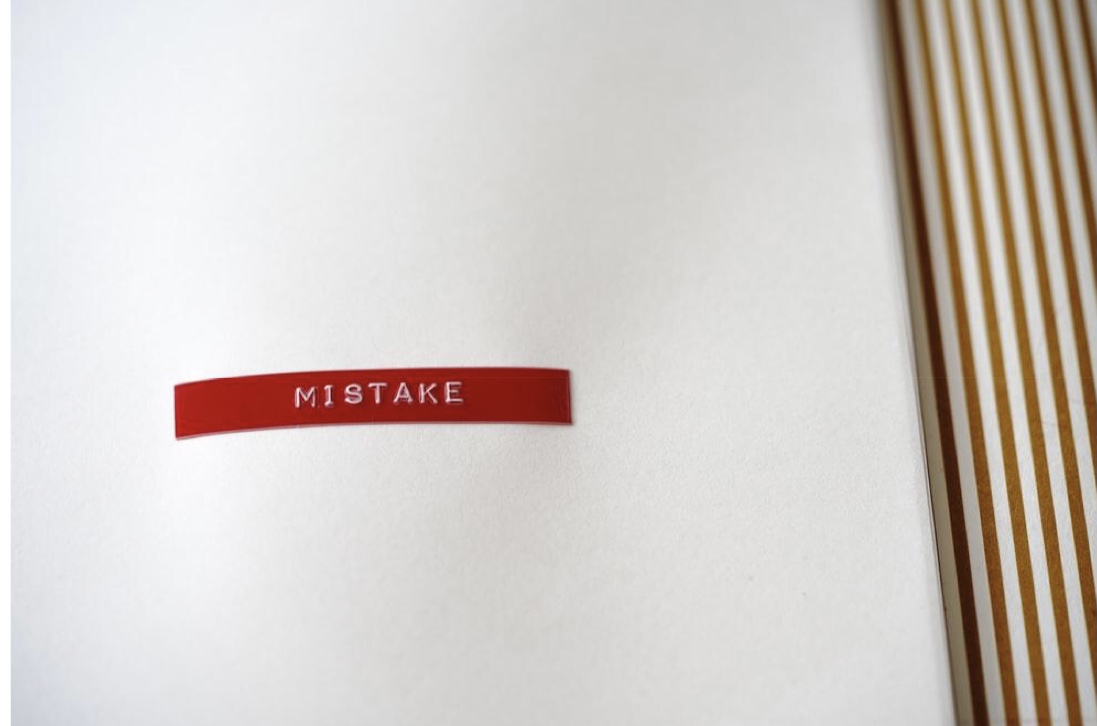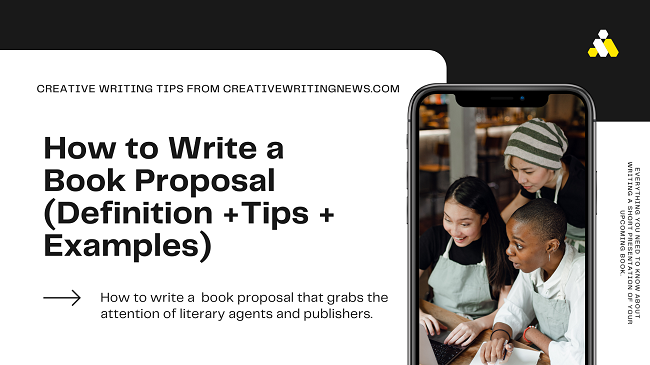How to Write a Book Proposal (Definition +Tips + Examples)
Are you eager to learn how to write a book proposal?
You’ve come to the right place. n this article, Dorian Martin offers a detailed guide on how to write a book proposal that literary agents and publishers can’t ignore.
Also included in this guide is a definition of a book proposal, examples of book proposals and tips on how to write a convincing book proposal.
Ready to learn? Read on.

Photocredit: Unsplash by NneNzn0vs44
A Step by Step Guide On How To Write A Book Proposal.
You have always dreamt of being a published author? You’re eager to make this dream a reality.
But one thing keeps pushing your submission deeper into the rejection slush pile. Your book proposal isn’t catchy enough.
And you thought a fantastic book idea could do the magic. However, a great book idea is just the beginning, the foundation.
Congratulations.
But by the time you’re finished writing the book, you’ll need to find a publisher or an agent. You’ll need to sell your amazing book idea to the literary gatekeepers.
This step involves writing a book proposal.
Before we delve into the major aspects of learning how to write a book proposal, let’s explore what a book proposal is.
What Is A Book Proposal?
A book proposal is a document used to pitch book ideas to publishers. A book proposal is a short presentation of your upcoming book. A synopsis and more.
The goal is to explain to publishers that your book is valuable.
The ultimate publishers’ question is, “Can we make money with this book?” The proposal needs to convince them that they can.
Publishers invest their money, workforce, and resources in the books. You book proposal assures the publisher that your book is worthy.
The purpose of a book proposal is:
- to help you get published.
- A good proposal can be the key to many doors.
- It can help you organize your thoughts and ideas.
- A book proposal will give you an overview of the whole project. Therefore, you can spot some inconsistencies easier.
Below is a detailed guide on how to write a book proposal. It’ll be helpful to writers who you have a finished book or plan to write one.
 Photocredit: Unsplash by user505
Photocredit: Unsplash by user505
Writing a proposal demands the following:
- Doing research (on competitive titles, target audience, unique value proposition)
- Presenting research data
- Explaining what the book is about
- Explaining why you are the right person for this project
- Proposing a book plan (chapter-by-chapter)
- Explaining how you plan to market the book
The length of a book proposal isn’t clearly defined. It can vary anywhere from 10 to 30 pages.
Aim to write the proposal concisely. However, include all relevant details.
To ensure that you don’t omit essentials, follow this guide.
A Guide On Writing a Book Proposal
1. Start Your Proposal with an Overview
The proposal starts with an introductory section. The overview should provide a brief synopsis. It should present the general idea of the book.
Answer this question in the overview:
What is the central focus of my book?
Imagine that you have a minute to win over the publishers. That’s what the overview should do.
You need to describe your book in a few sentences.
This section needs to hook the reader. Write a compelling and vivid description to do so.
If the overview is dull, publishers can instantly dismiss the proposal.
The opening sentence needs to act as an “elevator pitch.” It should entice the publisher to want to know more. You need to capture the publishers’ attention with intrigue.
For example, a book proposal can open with the following paragraph:
- This is an inspirational and shocking memoir of a girl who managed to escape the life of an “Islamic State” bride.
Aside from the first sentence, the last few sentences play a crucial role. End of the overview with sentences that leave a mark.
Why is this story interesting? Write each sentence with this in mind.
The overview in your book proposal should explain the significance of your book.
Don’t just focus on the content. Instead, focus on why readers should care about this book.
Think about what makes your book a must-read. That can help you surface compelling sentences for the overview.
2. Introduce Yourself
The proposal is your first point of contact with the publisher. Thus, you need to introduce yourself as an author.
Put your modesty aside. Establish yourself as a capable author.
Think beyond your basic information and author photo. You must build your credibility.
To add credibility to your image, include the following:
- Books you’ve published (title, date, and sales figures)
- Articles you’ve published
- Media that reports about your work
- Your guest writing gigs for popular publications (The Forbes, Guardian, etc.)
- Lectures and courses you’ve given
- Other speaking engagements
- Awards you’ve received
Mention any experience that supports your authority. If you have a successful blog, write it down. If you have tons of followers on social media, note that.
The publishers should see you as a person that drives attention.
Stating that you’ve written for The Guardian means more attention. For publishers, this signals to secure a post with the popular publication.
Put yourself in publishers’ shoes. What can help you sell the book? What experiences can benefit you in that way?
Back up all your claims with numbers. Write statistics that prove your success.
For example, share how many views your Guardian post got.
Your experiences and background need to work in your favor. Prove that you are the right person for this job. Moreover, prove that you can attract people’s attention.
Remember that publishers care about making money. They want an interesting and experienced individual.
Present yourself as an authority on the subject.
Let’s consider that you are writing a book on success. Prove that you are a successful person in the first place.
Publishers need to know that you can do the job.
3. Write the Synopsis of the Book
Provide a narrative description of your work.
You’ve shared an overview, and you’ve introduced yourself. Now it’s time to go more into detail.
The publisher should get acquainted with your book. That’s what synopsis is for.
The important elements of the book synopsis are:
- Chapter breakdown
- Character breakdown
- A sample of a chapter
Chapter breakdown should outline your chapters. Each chapter should be explained in a paragraph or two.
The purpose of the chapter breakdown is to show your book’s flow. Publishers can, in that way, assess your method of approach.
The character breakdown should shortly describe the characters. Exciting characters can promise to win over the audience.
Lastly, provide a sample of your chapter. Pick the one you are the proudest of.
The sample of a chapter will show off your style of writing. It will give publishers a glimpse of your talent.
If you’ve written a “humor meets sarcasm” type of book, show it. Prove to publishers that you keep your promises.
4. Summarize the Target Audience and Target Market

Your novel is targeting a certain crowd. That is, your work should serve the interests of a specific audience. The book proposal should give an overview of this information.
This section will touch upon:
- Details on your target audience
- Summary of your target market
Begin with outlining your target audience. Think about the following:
- For whom is your book primarily intended? Men or women?
- What age are you aiming at? Provide a range.
- Are you targeting people from urban or rural areas?
- What are your target audience’s interests?
If this is a sequel to a book, share data on your readers. Who bought the first book? What are their demographics?
Maybe you have a blog or social media page. Many of your followers will want to read your new book. Share insights from those platforms on your target audience.
The publishers need to understand your target audience. This will help them assess whether your book has potential.
The next step is explaining your target market.
What makes your book idea innovative?
Prove that there is an existing demand for your book. You must present your unique selling point.
Look at this as if you are writing a dissertation discussion. You must explain the significance of your writing. How will your content contribute to a larger field of interest?
To achieve that, you need to resort to research.
Start the search by looking for your competitors. There are similar books on the market. Thus, you must show how your book differs.
Moreover, you need to demonstrate why your book will be in demand.
Approach the search from different angles:
- Ask your friends about similar books they’ve read.
- Search libraries and bookstores within your section.
- Look into statistics on bestsellers in your niche/ genre.
- Read posts and articles on the subject. Pay attention to the reference list.
- Look for similar titles in the press.
The following samples will show you how to list competitive books. The inserts are from a proposal for a Christian non-fiction manuscript. The writer is David Sanford.
Here are two examples from this book proposal sample.
- Walking Away from Faithby Ruth Tucker (InterVarsity, 2002). Offers a brilliant historical and anecdotal analysis of the problems—but doesn’t offer readers hope.
- Scaling Life’s Summits: Surviving the Climb Without Losing Your Faithby Bill Woolsey and Scott Kaiser (PublishAmerica, 2004). Addresses the “seven dilemmas” that make people question God’s plan for their lives: aging, death, disaster, divorce, guilt, illness, and unemployment—and how the Bible makes it possible to “overcome” these dilemmas. Doesn’t truly address the problem—or solution—of losing one’s faith.
As you can tell, the books’ topics are briefly explained. More importantly, it is stated what they’re missing. That is, what they don’t offer, and David’s book does.
Explain how your book challenges topics that competitive books don’t. This will prove your unique value proposition.
Portray the potential demand for your book with numbers.
For instance, you can be writing a book on freediving. Share that the Facebook community dedicated to freediving has 300,000 members.
Do you have a blog on the topic you’re writing about? Then, state how many subscribers you have.
Use data from social media networks. Turn to Google analytics for website searches with relevant keywords.
Present any information that demonstrates your reach.
5. Outline Your Marketing Plan

Image Source
The proposal also needs to include your marketing strategy.
Over one million books are published each year. And that is in the U.S. alone!
Without a good marketing strategy, your book will pass unnoticed.
The publishers need to witness your business side as well. Not just your creative side.
Describe in the book proposal how you plan to market your book.
You’ve already established your target audience. Now, find appropriate marketing methods for that audience.
The marketing strategy will differ for Gen Z and Baby Boomers, for example. Thus, you must consider your target audience’s characteristics.
Besides, take into account your target market. Where can you reach your target audience?
Provide an outline of how your book will be promoted.
List your marketing channels. Whether you’ll use online ads, social media, guest-starring on podcasts, etc.
Specify your preferred channels and back it up with numbers. For example, these book proposal emphasizing the following facts:
- I’ll be a guest speaker at Comic-Con International 2021. Expected attendance is 140,000 people from more than 80 countries.
- I host webinars for over 500 people. My video lessons have over 2,000 views.
Mention any platform that you can use for promotion. Assure the publishers that you can be a successful promoter.
Show that you are a “man with a plan.” The book market is extremely competitive. You need to prove that you can take on that challenge.
Common Mistakes To Avoid When Writing Book Proposals.

Image Source: Unsplash
Knowing what to do is one side of the coin. The other side is knowing what not to do.
With that in mind, we’ll present common mistakes writers often make in their book proposals. These mistakes are the reasons why many writers get rejected.
Make sure that you don’t make the following mistakes:
Focusing solely on content.
Instead, focus on why your book can benefit the readers. Publishers need to understand what will sell this book.
Changing points of view.
Switching between “me” and “the writer” will be confusing. Stick to one point of view.
Too much talk, too little proof.
You can’t write “memoirs are popular” without proof. How many memoirs have been sold last year? How many people read your last memoir? Back up every claim with statistics.
Not doing enough research for your book proposal.
Without extensive research, your book proposal won’t be credible. The more information you surface, the better. You’ll be more certain about how to pitch your book.
Going with the “everyone is my audience” opinion.
How can you market your book to everyone? Not defining your audience can show a lack of commitment.
Not filtering the statistics.
Don’t throw in every statistic you find. You’ll end up with a mess. Only include extremely relevant data.
Conclusion On How To Write A Book Proposal.
Writing a book proposal should be a calculated move.
You need to be as detailed and persuasive as possible. That’s how you’ll ensure that publishers understand your idea correctly. More importantly, that’s how you’ll get them to work with you.
Remember that you need to be more than a writer. You must be a marketer as well.
Hopefully, our tips will clarify the process of writing a book proposal.
Use these guidelines to write a compelling book proposal. A proposal that will eventually bring your book the attention it deserves.
BIO: Dorian Martin is a writer, editor, and proofreader. One of the many writing services he provides is helping authors write book proposals. He also takes part in the dissertation discussion. Currently, he is editing a book and working as a freelance writer.







